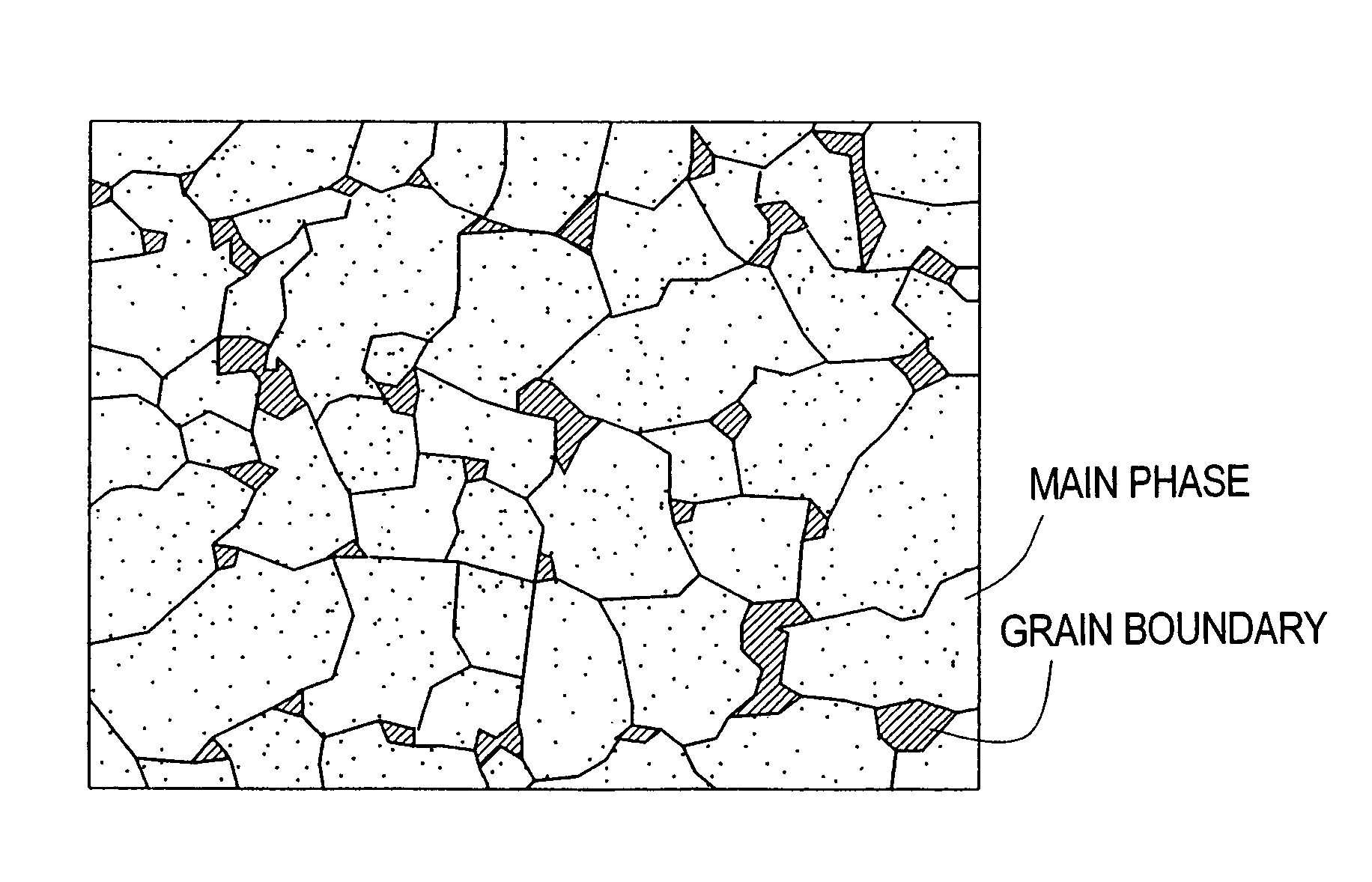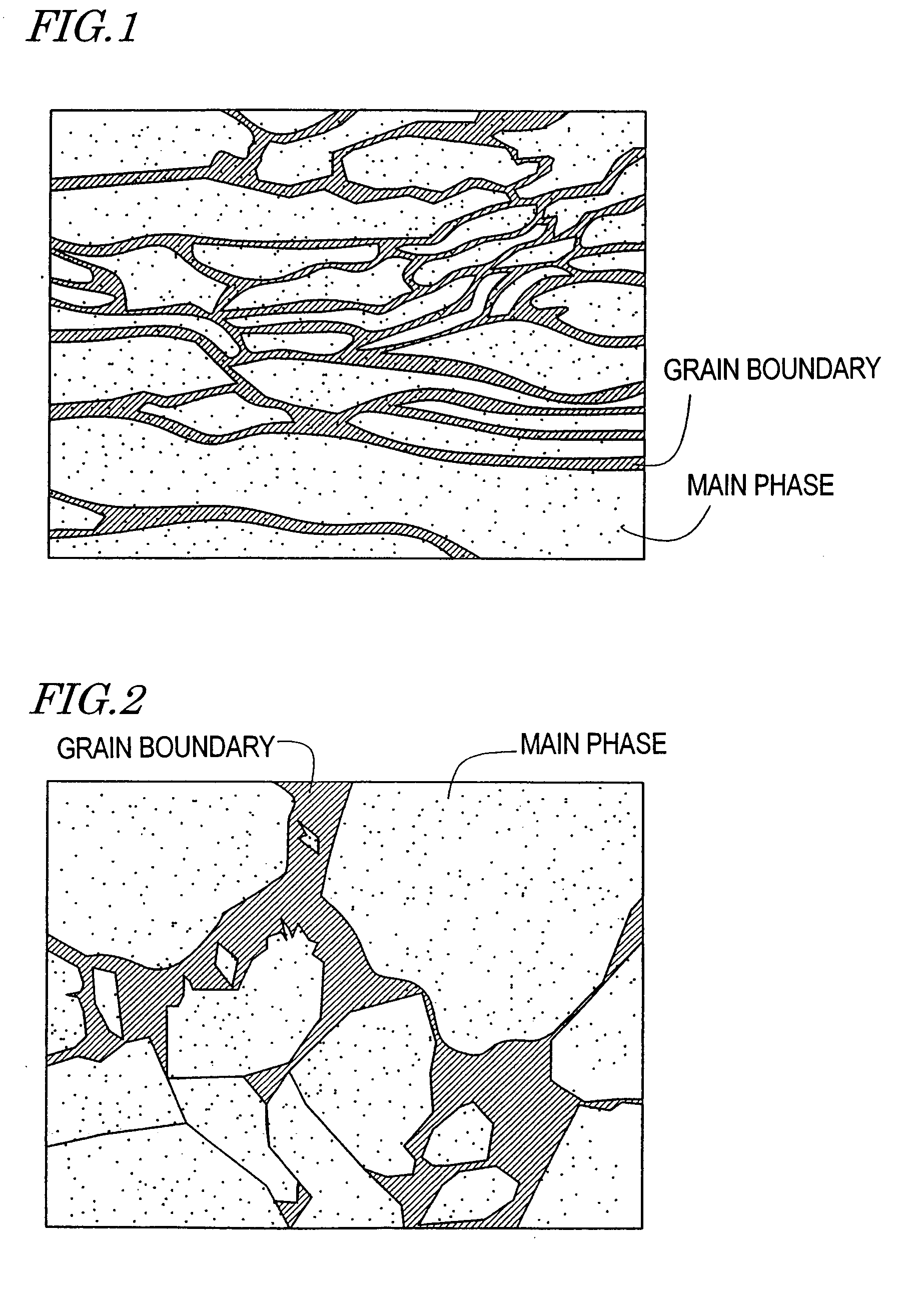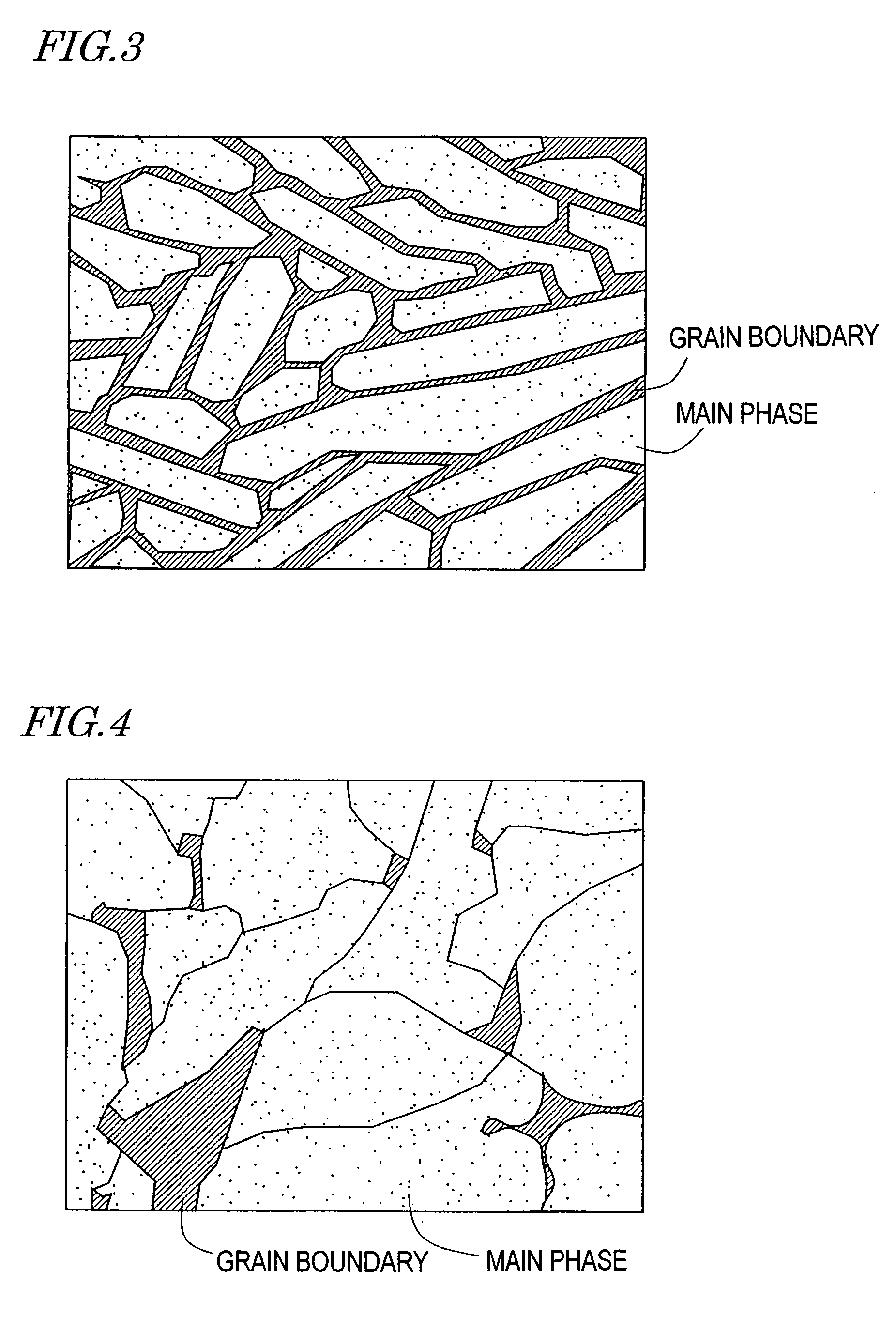Rare earth magnet and method for production thereof
a technology earth magnets, applied in the field of rare earth magnets, can solve the problems of oxidation and ignition, deterioration of sintering degree, and affect the degree of sintering badly
- Summary
- Abstract
- Description
- Claims
- Application Information
AI Technical Summary
Benefits of technology
Problems solved by technology
Method used
Image
Examples
embodiments
[0064]First, a molten alloy having a composition of 22% Nd-10% Dy-0.25% Al-0.05% Cu-1.0% B-the residual portion Fe in mass ratios was rapidly solidified by a strip casting method, so as to produce a quenched and solidified alloy with the above-mentioned composition (alloy A). As a relative example, an alloy (alloy B) was produced by an ingot method. FIG. 1 and FIG. 2 are schematic diagrams showing structures of the alloy A and the alloy B, respectively. In the attached figures, Dy is schematically shown as dots. As shown in FIG. 1, in the alloy A, Dy uniformly exists in the main phase and the grain boundary phase. As is seen from the comparison between FIG. 1 and FIG. 2, the amount of Dy existing in the grain boundary phase is larger in the alloy A than in the alloy B.
[0065]Next, for the alloys A and B, thermal treatment at 600° C. for 1 hour was performed in an Ar atmosphere. Structures of the alloys before and after the thermal treatment are shown in FIG. 3 and FIG. 4, respectivel...
PUM
| Property | Measurement | Unit |
|---|---|---|
| temperature | aaaaa | aaaaa |
| temperature | aaaaa | aaaaa |
| thickness | aaaaa | aaaaa |
Abstract
Description
Claims
Application Information
 Login to View More
Login to View More - R&D
- Intellectual Property
- Life Sciences
- Materials
- Tech Scout
- Unparalleled Data Quality
- Higher Quality Content
- 60% Fewer Hallucinations
Browse by: Latest US Patents, China's latest patents, Technical Efficacy Thesaurus, Application Domain, Technology Topic, Popular Technical Reports.
© 2025 PatSnap. All rights reserved.Legal|Privacy policy|Modern Slavery Act Transparency Statement|Sitemap|About US| Contact US: help@patsnap.com



